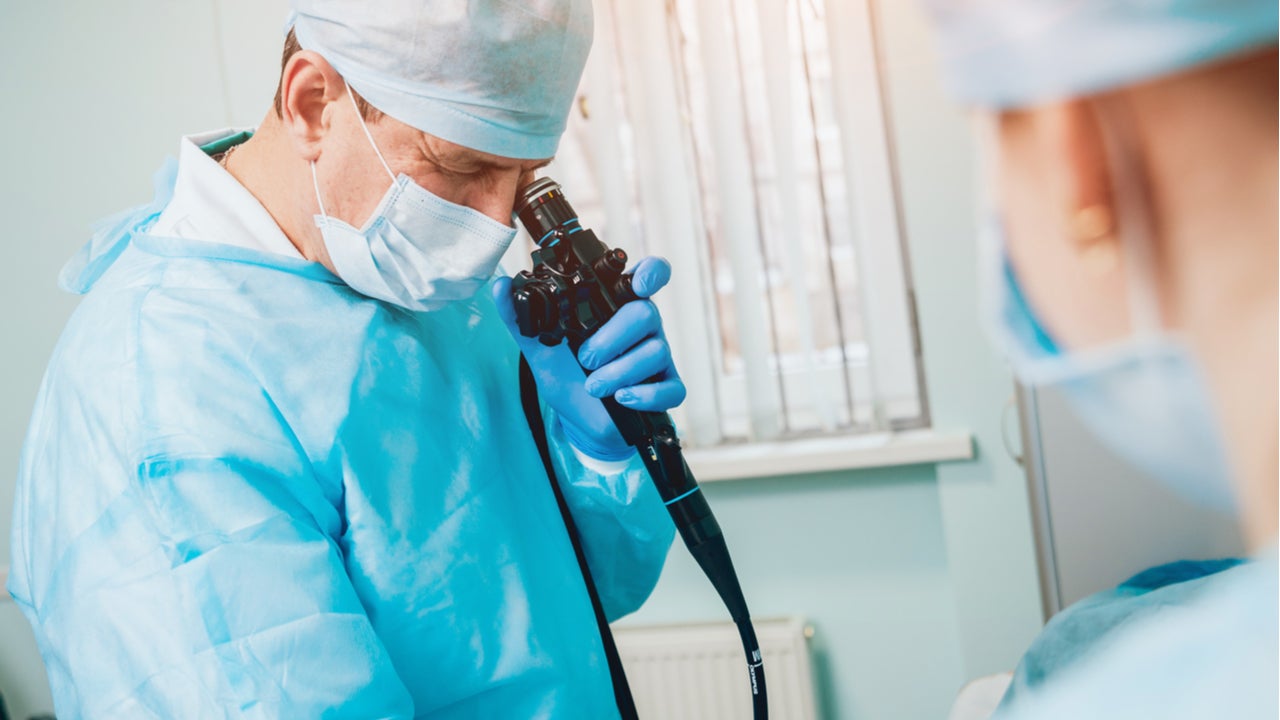
Around 60 million people in Europe have diabetes, with the vast majority of cases being type 2. While age and family history can contribute to the development of the condition, high blood pressure and being overweight are major risk factors.
Researchers at the Amsterdam University Medical Center in the Netherlands have now tested a novel minimally-invasive endoscopic ablation procedure called duodenal mucosal resurfacing (DMR) on 16 type 2 diabetes patients who were dependent on insulin. The procedure is designed to rejuvenate the lining of the duodenum.
The study found that 75% of the previously insulin-dependent patients no longer needed to take insulin six months after DMR, with HbA1c (a long-term parameter of glucose control) readings of 7.5% or below. HbA1c readings also fell to 6.7% at 12 months.
Patients who responded to the treatment also saw significant reductions in their body mass index (BMI), which was down from an average of 29.8 at the beginning of the research to 25.5 after a year. The percentage of fat in their livers also decreased from 8.1% to 4.6% at six months.
For the remaining 25% who remained reliant on insulin, the median dose they required fell by more than half, from 35 units per day at study entry to 17 units per day at 12 months. Similar results were also seen in an earlier study carried out by the same research team, which saw glucose improvements in patients who only received DMR and no additional drugs or counselling.
Of course, this was just a pilot study, and the successes of 16 patients aren’t enough to consider anything proven just yet. But the results are compelling, and a large international randomised controlled trial will soon start to further investigate its effectiveness in greater numbers.
How well do you really know your competitors?
Access the most comprehensive Company Profiles on the market, powered by GlobalData. Save hours of research. Gain competitive edge.

Thank you!
Your download email will arrive shortly
Not ready to buy yet? Download a free sample
We are confident about the unique quality of our Company Profiles. However, we want you to make the most beneficial decision for your business, so we offer a free sample that you can download by submitting the below form
By GlobalDataAmsterdam University Medical Center gastroenterology and hepatology PhD candidate Dr Suzanne Meiring says: “There’s a study starting right now in the US in around 20 to 30 hospitals, and they want to include 300 patients. The most interesting thing about this study is there will be a control group, so there are patients that will receive a placebo version of the DMR procedure, developed by Fractyl Laboratories, to really test our results and see if the things that we found are also found in that big study.”
DMR’s impressive results can’t be explained by anything else
DMR is performed in an outpatient setting and is delivered via an integrated over-the-wire catheter attached to a custom console. The console performs a synchronized lifting of the duodenal mucosa and then ablation of the treatment area.
Mucosal cells are believed to undergo alterations in a response to unhealthy diets that are high in fat and sugar, leading to changes in the production and signalling of key hormones that impact insulin resistance and diabetes. The exact mechanism of DMR isn’t understood yet, but resurfacing the duodenal lining appears to rejuvenate and reset this process.
The patients in the Amsterdam study weren’t treated with DMR alone. Instead, it was administered in combination with daily doses of glucose-lowering drugs called glucagon-like peptide-1 receptor agonists (GLP-1 RAs), alongside some mild lifestyle counselling.
While it’s possible the dramatic results of the pilot study were bolstered by these factors, it’s highly unlikely that they’re solely responsible.
“We know from earlier studies that if you only give patients GLP-1 RAs then on average 10% will be able to stop insulin, and these studies often combined GLP-1 RAs with lifestyle counselling,” says Meiring. “So there must be something else at work here, because our combination treatment works in 75% of cases. We expect that a major part of this effect is due to the combination with our DMR procedure.”
The drastic weight loss seen in the patients is also more significant than would be expected with GLP-1 RAs and counselling alone.
Meiring says: “We know that when you start insulin treatment, almost every patient experiences weight gain. So, possibly a part of the weight loss we saw in our patients is due to the stopping of insulin. However, it’s much more than you usually see when patients stop with insulin, and also the patients that are reintroducing insulin weigh less than at the start of the study.”
DMR could be hugely appealing for type 2 diabetics
In the pilot study, all patients were seen to benefit in some way from DMR, even if they had to stay on insulin afterwards. If these impressive results can be replicated on a larger scale, then there’s a good chance that this straightforward outpatient procedure could one day become a routine part of type 2 diabetes care.
Of course, duodenal ablation is no small matter, and it’s not something that’s likely to be prescribed days after an initial diagnosis. But most patients with type 2 diabetes are very keen to be able to discontinue insulin therapy, due to the side effects and mental load associated with the treatment, and DMR could be an appealing treatment for those who find diet and exercise alone can’t get their blood sugar under control.
“Insulin comes with weight gain, multiple daily glucose measurements and insulin injections and also risk of hypoglycaemic events where your blood sugar gets too low and you feel fatigued. These hypoglycaemic events can be very dangerous. So, patients are really happy to be able to stop with it,” says Meiring.
For now, it’s a waiting game to see what the results of the larger-scale study will reveal.




